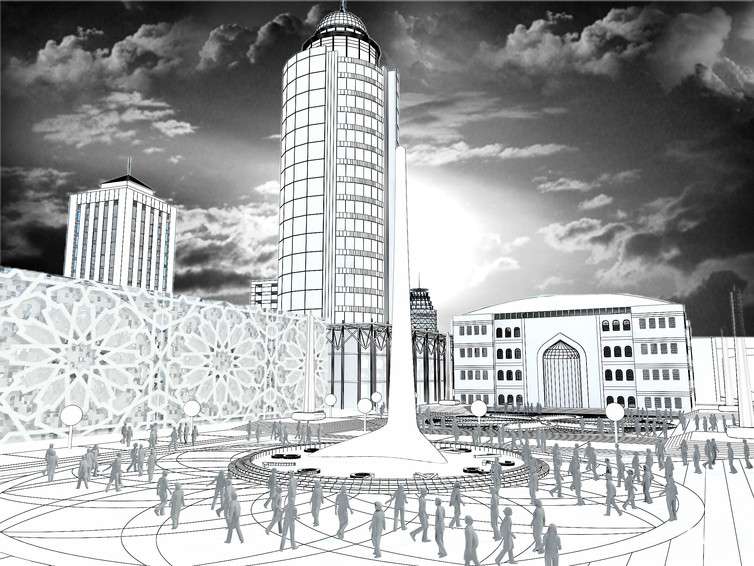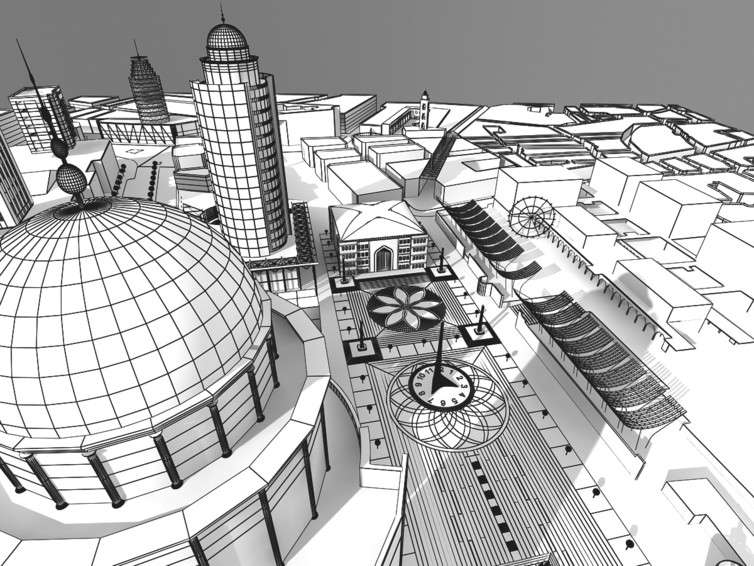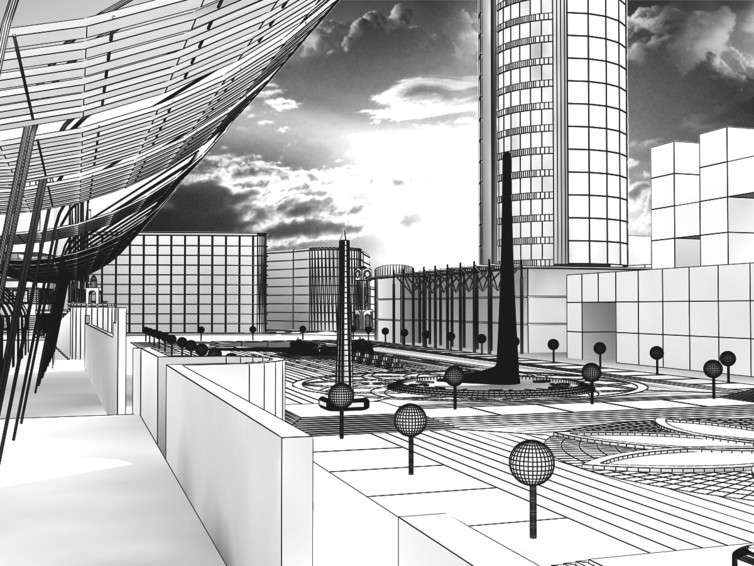Digital architecture can help rebuild ancient Syrian cities

Situated at the crossroads of the Orient and the Occident, for a long time Syria was one of the most important cultural centres of the ancient world. It boasted a rich history, looked to a bright future, and was considered a cradle of civilisation.
Now, of course, everything has changed.
The chaos of bitter war has ravaged the country, and left its cities in ruins. From Damascus in the south, to Aleppo in the north, and Palmyra in the middle, the ancient and contemporary cities of Syria have all been smashed by the wrecking ball of war. Glorious places obliterated by violence.
In Homs, my home town, most of the population has been hit by damage to their homes. Entire neighbourhoods have been reduced to rubble.
So how can we even begin to plan rebuilding these ancient Syrian cities when it seems like the destruction will never end? To start with, we must believe that one day there will be peace. And then we can learn lessons from the past. Destruction of the human built environment is by no means a new phenomenon. Throughout history, cities including Berlin, Warsaw, Beirut, Hiroshima and Tokyo have been severely devastated by conflicts and all been successfully reborn.
And in the 21st century, new technology has the potential to assist in rebuilding Syria. Technology has pushed the boundaries in the way we design, build and manage our cities. 3-D building information models (BIMs), which are essentially computer generated architectural drawings, are becoming increasingly advanced and more sophisticated.

As part of my research into BIMs, I designed a series of 3-D models imagining a future for Homs. These ideas revolve around creating a series of civic urban spaces for people from all parts of society. The surrounding buildings would be multi-functional, with shops, art galleries, offices and homes, for Homsians to gather with a collective sense of belonging.
A major advantage of these models is that they do not just represent the geometrical information of a project such as materials and dimensions. They can also contain the non-graphical information such as a fourth dimension, (time and scheduling), a fifth (cost of the building elements) and a sixth (a building's management, by including operation manuals for building components for example).
These models are realistic, informative and integrated, offering a clearer vision for everyone involved in the building project. Policy makers, architects, engineers and the local community all benefit from having so much extra information.
BIMs also bring the benefits of saving time and cost in the construction sector. The British government's programme, Digital Built Britain, reported that the application of BIM was the main contributor to more than £800m of savings in the UK's construction sector in 2013-2014.
Such savings will be of vital importance when rebuilding Syria with a damaged post-war economy.

But the rebuilding must not brick over what is still happening to my country.
Preserving the wounds of the war will be essential for future generations to better remember and understand the brutality of battle. Other cities that have been rebuilt after war have communicated their own savage destruction through documentaries, photographs and literature.
Another powerful way to keep alive the memories of war is by preserving destroyed sites as memorials. This was achieved to remarkable effect in Oradour-sur-Glane, in France, where ruins of the war have been kept frozen in time without being demolished or rebuilt. Similar monuments have become lasting landmarks in other cities including the roofless Coventry Cathedral in the UK, and the Hiroshima Dome in Japan. Multiple parts of the Berlin Wall have become significant landmarks and an important artwork of the contemporary German city.
Post-war Syrian cities should aim to apply similar scenarios, to reflect upon, remember and actually experience the blasted landscapes of war. Not by watching them in documentaries, but more powerfully, by physically walking through these memories.

Gone, but not forgotten
That said, not all the ruins should be physically preserved. But architectural technology can also assist in digitally documenting the memories of Syria. A digital replica of the shattered cities can be created using the new science of 3-D laser scanning.
There have even been suggestions of 3-D printing a new Palmyra.
All of these technological tools could be used to great effect when we finally get the chance to start rebuilding the broken country that is Syria in 2016.
Who knows when the war will end, and when the millions of refugees will be back home? When the scattered families will be reunited? When the bleeding wounds of Syria will be healed?
As this drone footage dramatically shows, there will be much work to do.
But until then, amid all the destruction, we all have to start by thinking about creating something from the ashes. Remembering the real Syria, its rich history and imagining a way of rebuilding it. I hope that Syria will emerge with an exciting future and a strong soul. As the Lebanese-American poet Khalil Gibran says: "Out of suffering have emerged the strongest souls; the most massive characters are seared with scars."
Source: The Conversation
This article was originally published on The Conversation. Read the original article.
![]()





















